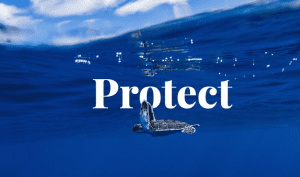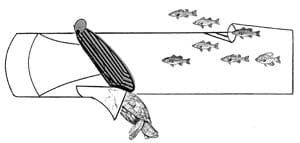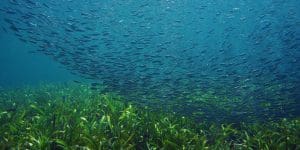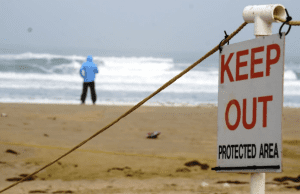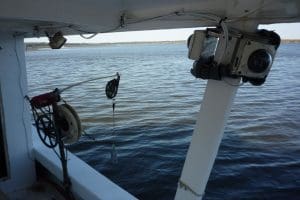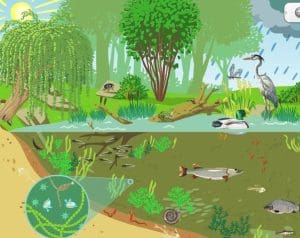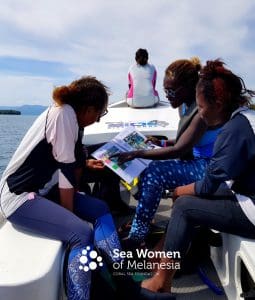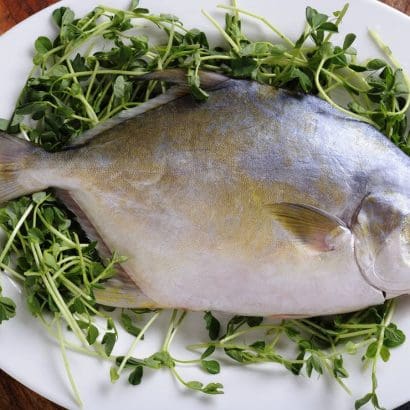
Trawl fishing has been an essential method for catching fish for many years, supplying a large portion of the seafood we consume. However, traditional trawl fishing techniques have raised significant environmental concerns, including overfishing and damage to marine habitats. This has led to a growing interest in sustainable trawl fishing—a method that aims to reduce the negative impact on the environment while still providing the seafood we need.
In this article, we will break down what sustainable trawl fishing is all about. We’ll look at why it’s important, how it can be practiced, and the benefits it brings to our oceans and fishing communities. By understanding sustainable trawl fishing, we can help protect marine life, ensure the future of our seafood supply, and support the livelihoods of those who depend on fishing.
Contents
What is Sustainable Trawl Fishing?🐟
Sustainable trawl fishing is a way to catch fish that protects our oceans and the creatures that live there. Unlike traditional trawl fishing, which can harm the environment, sustainable trawl fishing uses methods and tools that reduce damage to marine life and habitats. This means we can enjoy seafood without hurting the planet.
Importance of Sustainable Trawl Fishing.🐟
Why Sustainable Trawl Fishing Matters
Sustainable trawl fishing is crucial for protecting our oceans and the species that live there. Traditional fishing methods can harm the environment, but sustainable practices help keep the ocean healthy. Here’s why sustainable trawl fishing is so important:
Protecting Marine Biodiversity.
The ocean is home to countless species of fish, plants, and other creatures. Sustainable trawl fishing helps protect this biodiversity by reducing bycatch—unintentionally catching other species. With sustainable trawl fishing, we can make sure that only the right fish are caught, letting other marine life thrive.
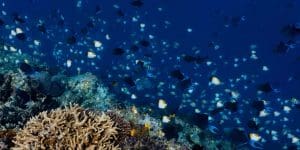
Preserving Critical Habitats.
Certain areas in the ocean, like coral reefs and seagrass beds, are vital for marine life. These habitats are breeding and feeding grounds for many species. Sustainable trawl fishing avoids these sensitive areas, preserving them for future generations. This helps maintain a balanced ecosystem.
Ensuring Future Seafood Supplies.
We all love seafood, whether it’s a family dinner or a special occasion. By practicing sustainable trawl fishing, we ensure that fish populations remain healthy and abundant. This means we will have plenty of fish to enjoy now and in the future. It also helps the fishing industry stay strong and productive.
Supporting Fishing Communities.
Fishing is not just a job; it’s a way of life for many communities around the world. Sustainable trawl fishing supports these communities by ensuring there are enough fish to catch. This way, fishers can continue their work, support their families, and keep their traditions alive.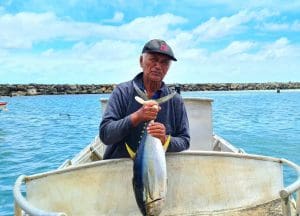
The Benefits of Sustainable Trawl Fishing.
There are many reasons why sustainable trawl fishing is beneficial:
- Protecting marine life: By reducing bycatch and avoiding sensitive habitats, we can protect a wide range of marine species.

- Preserving ecosystems: Sustainable methods help keep the ocean’s ecosystems balanced and healthy.
- Ensuring seafood availability: By preventing overfishing, we ensure that there will be plenty of fish for future generations.
- Supporting fishing communities: Sustainable practices help maintain the livelihoods of people who depend on fishing.
Delicious and Sustainable: 5 Recipes with Castañeta Fish
If you’re looking for tasty and eco-friendly seafood options, try these 5 recipes with Castañeta fish. Castañeta fish is a great choice because it is often caught using sustainable trawl fishing methods. These recipes are easy to make and perfect for any occasion.
Key Practices in Sustainable Trawl Fishing.🐟
Selective Gear Technology.
Selective gear technology is essential in sustainable trawl fishing. This technology ensures that only the targeted fish species are caught, while other marine creatures can escape. Here are some key features of selective gear technology:
- Bycatch Reduction Devices (BRDs): These devices allow non-target species, like small fish and other marine animals, to escape from the trawl nets. This reduces bycatch and helps protect marine biodiversity.

- Turtle Excluder Devices (TEDs): TEDs are designed to allow turtles to escape from shrimp trawl nets. This protects endangered sea turtles and reduces the impact on their populations.
By using selective gear technology, fishers can minimize harm to non-target species and ensure more sustainable fishing practices.
Habitat Protection.
Protecting marine habitats is a crucial aspect of sustainable trawl fishing. Fishers avoid trawling in sensitive areas to preserve these important ecosystems. Some key practices include:
- Avoiding Coral Reefs: Coral reefs are vital habitats for many marine species. Trawling in these areas can cause significant damage, so sustainable fishers avoid them.
- Preserving Seagrass Beds: Seagrass beds provide food and shelter for numerous marine animals. Protecting these areas helps maintain a healthy marine environment.

- Safeguarding Spawning Grounds: Fish spawn in specific areas. By avoiding these zones, fishers help ensure that fish populations can reproduce and grow.
These practices help maintain the health and balance of marine ecosystems.
Fishing Quotas and Regulations.
Following fishing quotas and regulations is another critical practice in sustainable trawl fishing. These rules help prevent overfishing and ensure that fish populations remain healthy. Key aspects include:
- Catch Limits: Governments and organizations set limits on how much fish can be caught. These limits are based on scientific research and help prevent overfishing.
- Seasonal Closures: Certain times of the year are crucial for fish breeding and growth. Seasonal closures prevent fishing during these periods, allowing fish populations to recover.

- Size Limits: Fishers are required to release undersized fish. This practice ensures that young fish can grow and reproduce, maintaining the population.
By adhering to these quotas and regulations, fishers contribute to the sustainability of fish stocks.
Monitoring and Compliance.
Effective monitoring and compliance are essential for ensuring that sustainable practices are followed. This includes:
- Electronic Monitoring Systems: These systems use cameras and sensors to track fishing activities. They help ensure that fishers comply with regulations and use sustainable methods.

- Observer Programs: Human observers are placed on fishing vessels to monitor activities and ensure compliance with sustainable practices.
- Reporting Requirements: Fishers must report their catches and fishing activities. This data helps authorities track fish populations and enforce regulations.
Monitoring and compliance help ensure that sustainable trawl fishing practices are being followed correctly.
Benefits of Sustainable Practices.
Practicing sustainable trawl fishing brings numerous benefits:
-
- Protecting marine life: Reducing bycatch and avoiding sensitive habitats help protect marine species.
- Preserving ecosystems: Sustainable methods maintain the health of marine ecosystems.

- Ensuring seafood availability: Preventing overfishing ensures that fish stocks remain healthy and abundant.
- Supporting fishing communities: Sustainable practices help maintain the livelihoods of fishers and their communities.
Challenges and Solutions.🐟
Economic Costs
One of the main challenges in sustainable trawl fishing is the economic cost. New technologies and sustainable practices can be expensive, especially for small-scale fishers. However, the long-term benefits outweigh the initial costs. Sustainable fishing ensures that fish populations remain healthy, which secures the future of the fishing industry.
Solutions:
-
- Government Grants: Governments can provide financial assistance to help fishers invest in sustainable technologies.

- Subsidies: Offering subsidies for sustainable fishing gear can reduce the financial burden on fishers.
- Partnerships: Collaboration between governments, NGOs, and fishing communities can help share costs and resources.
- Government Grants: Governments can provide financial assistance to help fishers invest in sustainable technologies.
Enforcement.
Ensuring that all fishers follow sustainable trawl fishing practices can be challenging. Monitoring and enforcement require resources and commitment from authorities.
Solutions:
-
- Electronic Monitoring: Using cameras and sensors on fishing vessels can help monitor activities and ensure compliance.
- Observer Programs: Placing human observers on boats to monitor fishing practices in real-time.
- Community Involvement: Involving local communities in enforcement can help ensure that everyone follows the rules.
Education and Training.
Not all fishers are aware of the best sustainable trawl fishing practices. Providing education and training is crucial for widespread adoption.
Solutions:
-
- Training Programs: Organizing workshops and training sessions to educate fishers about sustainable practices.

- Educational Materials: Creating easy-to-understand guides and materials that explain sustainable fishing techniques.
- Mentorship: Experienced fishers can mentor others, sharing knowledge and best practices.
- Training Programs: Organizing workshops and training sessions to educate fishers about sustainable practices.
The Life of Sharks in the Open Sea.
Understanding the life of sharks in the open sea is vital for sustainable fishing. Sharks play a crucial role in marine ecosystems, but they are often caught as bycatch in trawl fishing. Protecting sharks ensures the health of the ocean.
Solutions:
-
- Bycatch Reduction Devices: Using technology to reduce the accidental capture of sharks.
- Protected Areas: Establishing marine protected areas where fishing is restricted or prohibited to safeguard shark populations.
- Research and Monitoring: Investing in research to better understand shark behavior and their role in the ecosystem.
The Importance of Sustainable Trawl Fishing.
Sustainable trawl fishing is essential for maintaining the balance of marine ecosystems. By adopting sustainable practices, we protect marine life, ensure the future of seafood, and support fishing communities. Overcoming the challenges in sustainable trawl fishing requires a collective effort from governments, fishers, and communities.
FAQs About Sustainable Trawl Fishing.🐟
What are the benefits of sustainable trawl fishing?
Sustainable trawl fishing offers numerous benefits for the environment, economy, and fishing communities:
- Environmental Protection: It helps preserve marine biodiversity by reducing bycatch and avoiding damage to sensitive habitats like coral reefs and seagrass beds.
- Resource Management: Ensures the long-term availability of fish stocks by preventing overfishing and allowing fish populations to recover and thrive.
- Economic Stability: Supports the livelihoods of fishers by maintaining a stable and productive fishing industry, which in turn helps sustain local economies.
- Healthier Ecosystems: Promotes the overall health of marine ecosystems, which benefits all marine life and contributes to the balance of oceanic environments.
How can trawl fishing be made more sustainable?
Trawl fishing can be made more sustainable through several key practices:
- Selective Gear Technology: Utilizing bycatch reduction devices (BRDs) and turtle excluder devices (TEDs) to minimize the capture of non-target species.
- Regulatory Compliance: Adhering to fishing quotas, size limits, and seasonal closures to prevent overfishing and protect fish populations during critical breeding periods.
- Habitat Protection: Avoiding trawling in ecologically sensitive areas such as coral reefs, seagrass meadows, and spawning grounds to preserve these crucial habitats.
- Monitoring and Enforcement: Implementing robust monitoring systems, including electronic monitoring and observer programs, to ensure compliance with sustainable practices.
What are some examples of sustainable trawl fishing practices?
Several practices exemplify sustainable trawl fishing:
- Use of BRDs and TEDs: These devices help reduce bycatch and protect endangered species like sea turtles.
- Avoidance of Sensitive Habitats: Fishers steer clear of trawling in areas known for their ecological importance, such as coral reefs and seagrass beds.
- Adherence to Quotas and Regulations: Following scientifically determined catch limits and observing seasonal closures to allow fish populations to regenerate.
- Electronic Monitoring: Utilizing technology to monitor fishing activities in real-time, ensuring adherence to sustainable practices and reducing illegal fishing.
- Community Engagement: Involving local fishing communities in decision-making processes and conservation efforts to promote sustainable practices and improve compliance.

